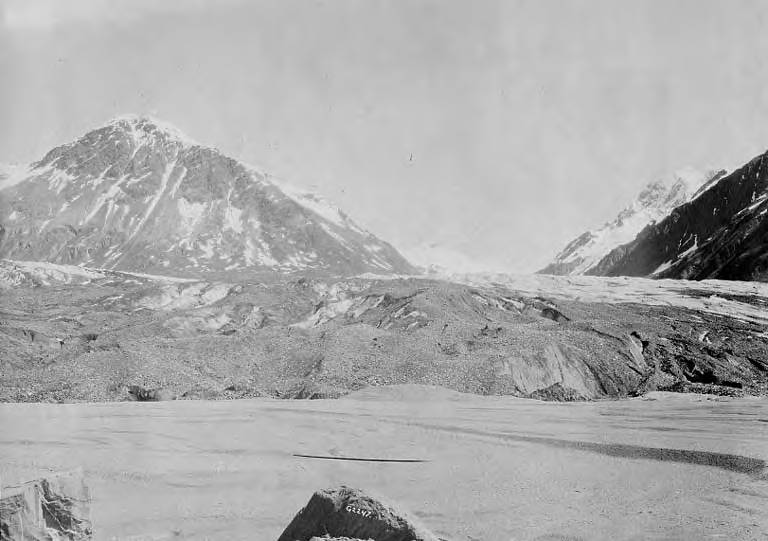On the evening of July 7th into the early hours of July 8th, the Valdez Glacier underwent a massive separation and calving event. According to drone footage, it appears the entire remainder of floating toe has separated, leaving the rest of the glacier to sit upon land. KCHU’s
Gabriella Palko looks into the historical and climatic impact of this story. Click below to listen. Text copy, a P. S. Hunt photo of the glacier from 1910 and a video from the site, warning of the danger, courtesy of City of Valdez, are below the media player
After seeing a Facebook post about the Valdez Glacier separation event, I drove out to see the lake the next morning. And i wasn’t alone, there were several cars, locals, and Valdez officials standing at the shoreline as well. While icebergs and chunks of bergy bits are common in the
lake throughout the summer and make this a popular recreation site, we all agreed we had never seen anything like this before. The lake was brimming full of the fresh remnants of recently calved ice. According to aerial footage, it appears the last floating remainder of the glacier has broken off, in what some locals are calling the “End of an Era”.
The Valdez Glacier holds historical significance for this Prince William Sound community. It was the chosen route of Lt. Abercrombie to access interior Alaska in the late 1800s Gold Rush. Prospectors flocked to Port Valdez, and an estimated three to-5000 gold-seekers crossed the
Valdez Glacier from 1898 to 1899 to reach the Copper Basin. It was a treacherous and often perilous route that was soon abandoned in favor of the Keystone Canyon trail.
Though the route was abandoned, the glacier’s location, shape, and size have been avidly documented through photographs and measurements over the decades. Take a look at any of the Valdez Museum and Historical Archive’s photos of the glacier throughout the 1900s and late 1800s and you can see just how far it’s gone. According to Nancy Lethcoe’s guide to Glaciers of Prince William Sound, The Valdez Glacier has been in a steady retreat for over a century. In the 1930s, observers measured shrinkage of height of 15-20 feet per year. The average rate of retreat for the entire 20th century was 45-55 feet per year.
|
|
While calving, separation, and retreat are natural phenomena to glaciers, the link between climate change and glacial recession is inextricable. Alaska is among the fastest warming regions on Earth. According to the Fourth National Climate Assessment put out by the US Global Research Program, the State’s temperature rates are warming twice as fast as the global average since the middle of the 20th century.
This has a serious impact on the state’s glaciers, causing an estimated loss of 75 gigatons of ice volume per year from 1994 to 2013, 70% of which is coming from land-terminating glaciers. This rate is nearly double the 1962–2006 rate, meaning things are heating up and melting quickly.
As the ice continues to move throughout the lake, The City of Valdez is warning people not to explore right now as rolling icebergs and the unstable face pose serious risks to kayakers and recreators. Three tourists died last year on an unguided kayaking trip in the lake. But from the
safety of shoreline, it’s worth going to witness this moment in the rich history of the Valdez glacier.
Reporting in Valdez, I’m Gabriella Palko.


